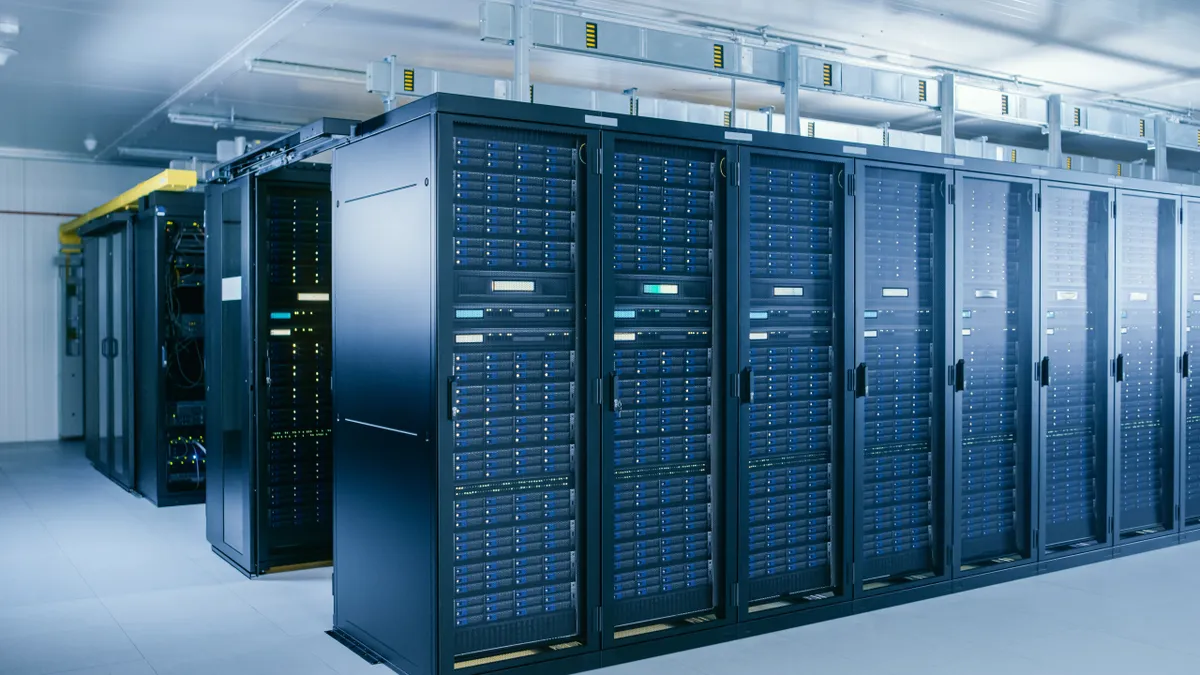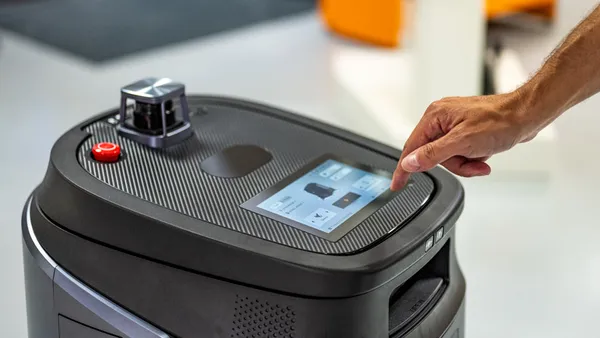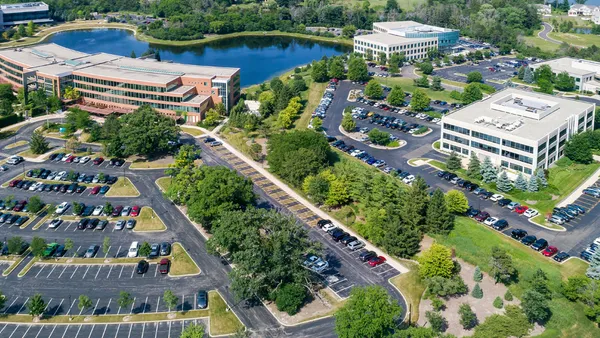Dive Brief:
- The rapid adoption of generative AI will continue to drive higher rack density, which is the amount of computing equipment installed and operated in a single server rack, according to JLL’s global data center outlook released Jan. 31.
- This higher density exacerbates the cooling demands within data centers due to the substantial heat generated by concentrated computing equipment, the report notes. These demands have led operators to increasingly shift to liquid cooling to offset the energy needs of higher computational power.
- To manage higher power densities in new and existing centers, operators will need to employ intelligent management and monitoring software that can boost efficiency and cut operational costs while requiring less staff, JLL says.
Dive Insight:
In the next five years, consumers and businesses will generate twice as much data as was created over the past 10 years, JLL says in its report. To meet that demand, total storage in data centers and endpoint devices will more than double to reach 21 zettabytes in 2027, from 10.1 ZB in 2023, clocking a five-year compound annual growth rate of 18.5%, according to the report.
At the same time, leading data center operators continue to make efficiency improvements, with cloud, hyperscale and colocation data centers running “much more efficiently than the traditional enterprise data center they are replacing,” JLL says.
The report points to software-defined power as an opportunity to increase energy efficiency by optimizing energy use. Software-defined power encompasses different functionalities where software interacts with electrical systems, such as load shedding, load balancing and server throttling. About half of the data center operators surveyed by the Uptime Institute in 2022 expressed a belief that these functionalities will improve the efficiency of data centers within the next five years.
Intensifying data center power requirements are also colliding with the transition to sustainable energy. Since high-performance computing and AI systems require significantly more power, the energy infrastructure of data centers faces considerable strain, amplifying the challenges of sourcing sufficient power capacity, the report notes. While rooftop solar is the “most prolific form” of generating low-carbon power on-site, JLL says, the amount of electricity it produces can fluctuate depending on various factors like weather conditions, time of day and season. As a result, maintaining a consistent and reliable power supply can be challenging, the report observes. Against that backdrop, new solutions are emerging to meet sustainable power demands.
“In addition to location and design considerations, data center operators are starting to explore alternative power sourcing strategies for onsite power generation including small modular reactors (SMRs), hydrogen fuel cells and natural gas. With power grids becoming effectively tapped out and transformers having lead times of over three years, operators will need to innovate,” Andy Cvengros, managing director of U.S. data center markets at JLL, said in the report.
The report also points to power purchase agreements as a leading approach for operators to meet their renewable energy commitments, citing Amazon’s implementation of over 100 new solar and wind projects in 2023.













